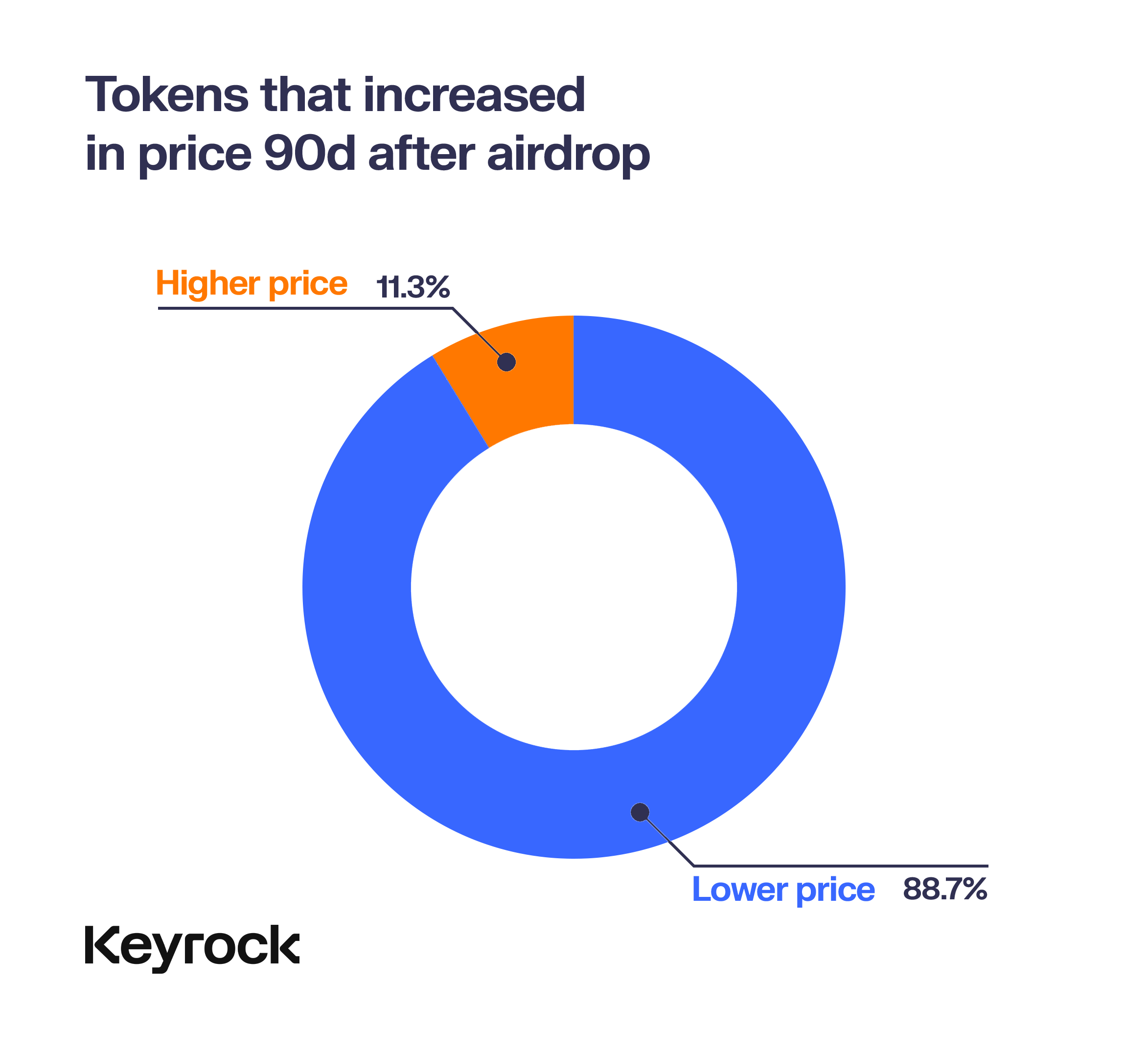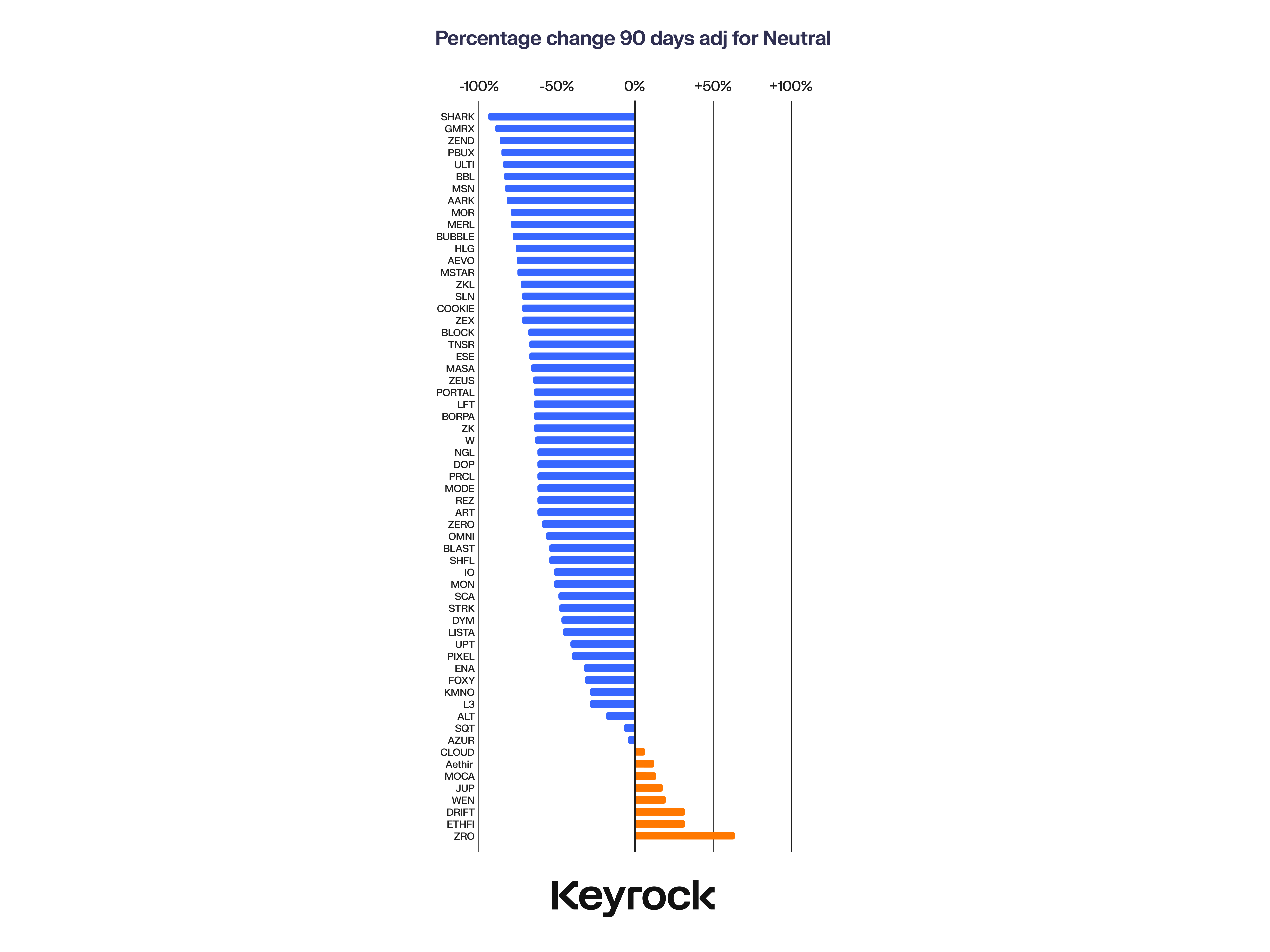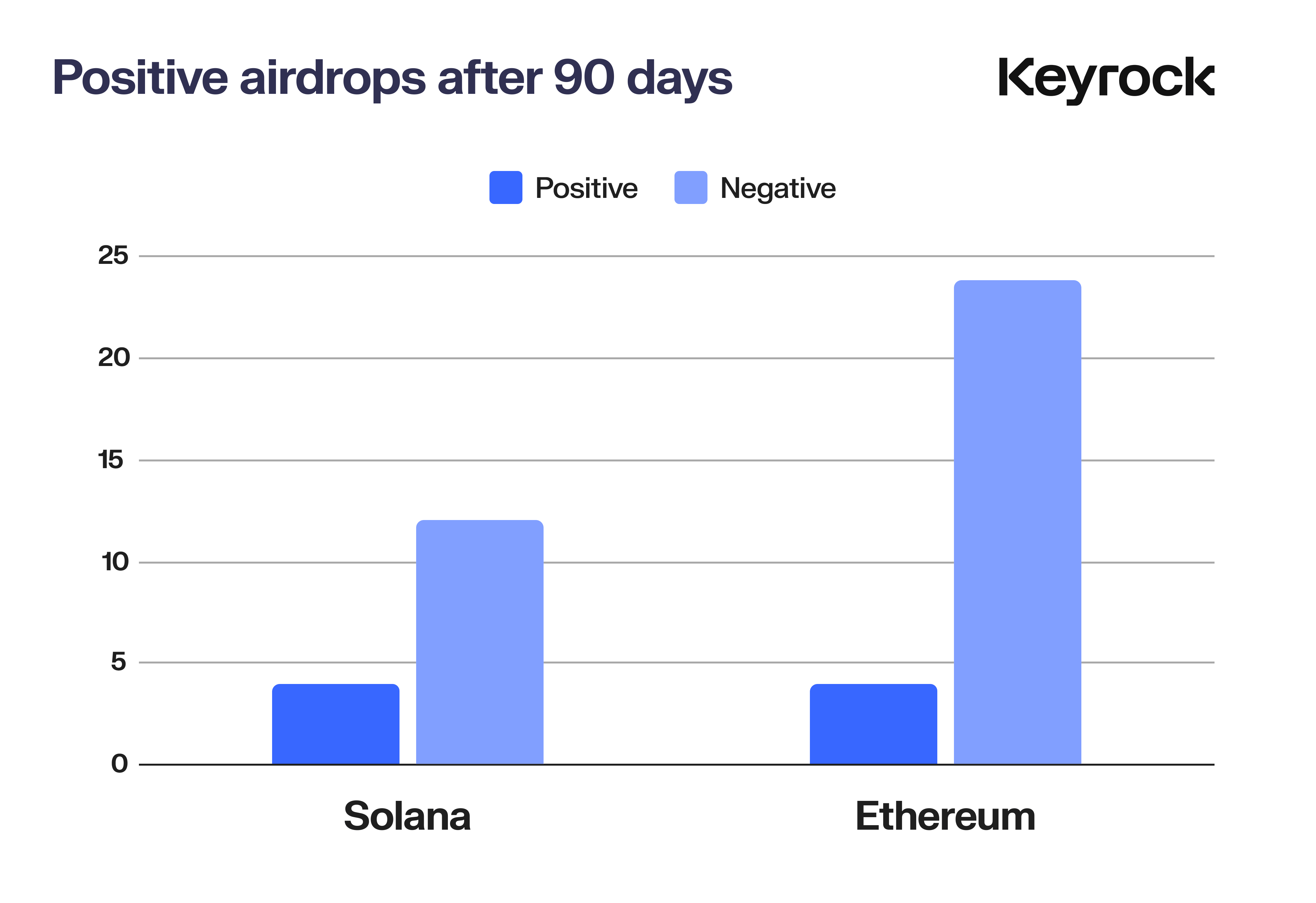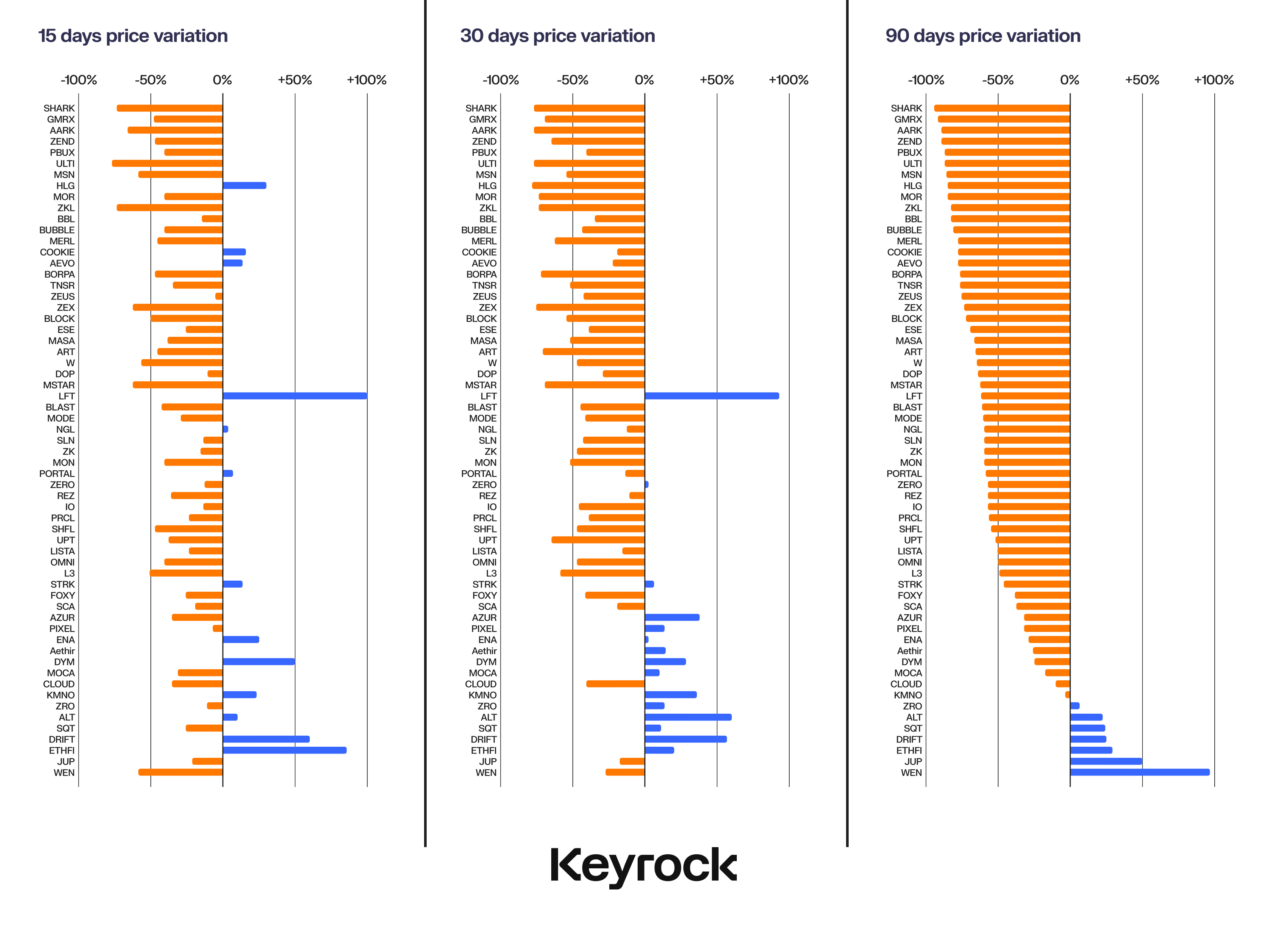Airdrops, a method of distributing free tokens, have long been a popular strategy in the cryptocurrency space, especially for generating early excitement. However, in 2024, many projects using this method struggled to gain lasting traction.
Despite initial price spikes, a significant number of tokens saw steep declines soon after launch.
This article analyzes the most notable successes and failures of 2024’s airdrops and explores the critical factors that influenced their performance, including community retention, token distribution size, and the effect of Fully Diluted Valuations (FDV) on price.

The Challenges of Airdrop Sustainability
The majority of 2024’s airdrops experienced rapid declines in value within just 15 days post-launch. Our analysis of 62 airdrops across six different blockchains showed that 88% of these tokens faced significant drops within months, despite initial hype, according to Keyrock’s research.
This trend highlights a recurring issue: while airdrops effectively attract users at launch, they often fail to retain them, leading to protocol abandonment. This pattern is exacerbated by many users farming airdrops for quick rewards rather than engaging with the projects long-term.
Winners and Losers in 2024 Airdrops
Among the 62 airdrops studied, Ethereum and Solana had the best retention rates, with 25% and 14.8% of tokens from these chains yielding positive returns after 90 days.

Solana, in particular, performed well, reflecting its strong retail following. In contrast, chains like BNB, Arbitrum, and Starknet saw none of their airdropped tokens sustain positive returns.

A standout winner was $DRIFT, a decentralized futures platform on Solana. It allocated 12% of its token supply in the airdrop and designed a clever distribution system to encourage long-term community engagement. As a result, it saw a nearly 3x increase in market value post-launch. On the flip side, $ZEND from ZkLend faced a steep 95% drop in value after attracting primarily short-term speculators rather than committed users.

Impact of Airdrop Size on Token Price
The size of an airdrop—how much of a project’s token supply is distributed—plays a critical role in its post-launch performance. Our data shows that larger airdrops (over 10% of the total supply) tend to perform better over the long term, fostering a stronger sense of community ownership and loyalty. In contrast, smaller airdrops (less than 5%) often see sharp sell-offs soon after distribution.
While large airdrops create early price volatility due to selling pressure, they also help establish a more stable user base. Medium-sized airdrops (5-10%) strike a balance between initial supply control and user retention, typically performing better than smaller airdrops but not as well as the largest distributions.
Fully Diluted Valuation (FDV) and Liquidity
Another significant factor affecting the success of airdrops is FDV. Tokens with inflated FDVs—especially without enough liquidity to support them—are prone to steep declines. Our research shows that projects launching with a modest FDV fared better than those with excessively high valuations, which often lacked sufficient liquidity to prevent drastic price drops when early holders cashed out.
For example, $W, which launched with an FDV of $13 billion but lacked adequate liquidity, saw an 83% decline in value. In contrast, $DRIFT’s lower FDV and better liquidity management allowed it to maintain stability and foster longer-term price support.











